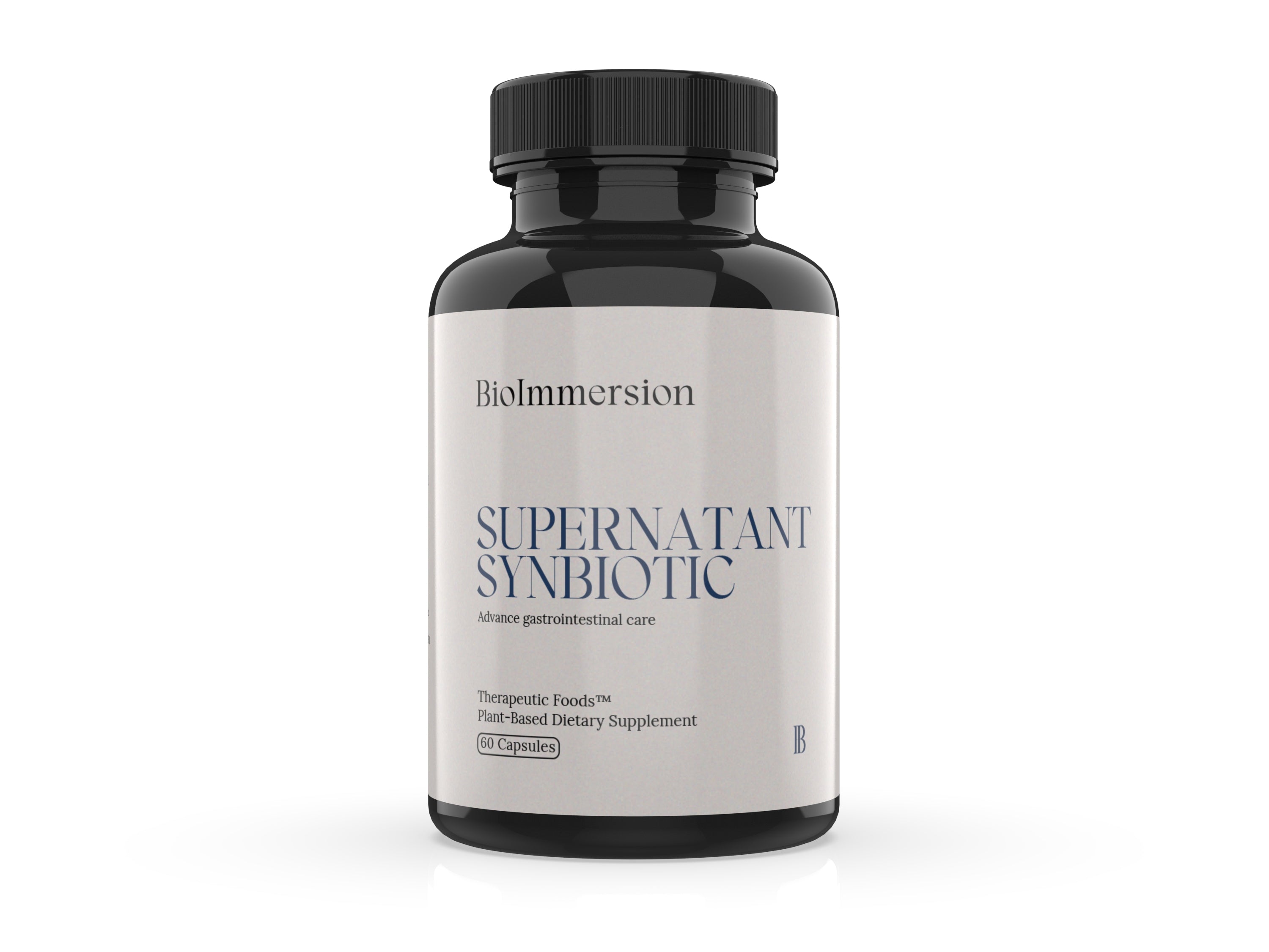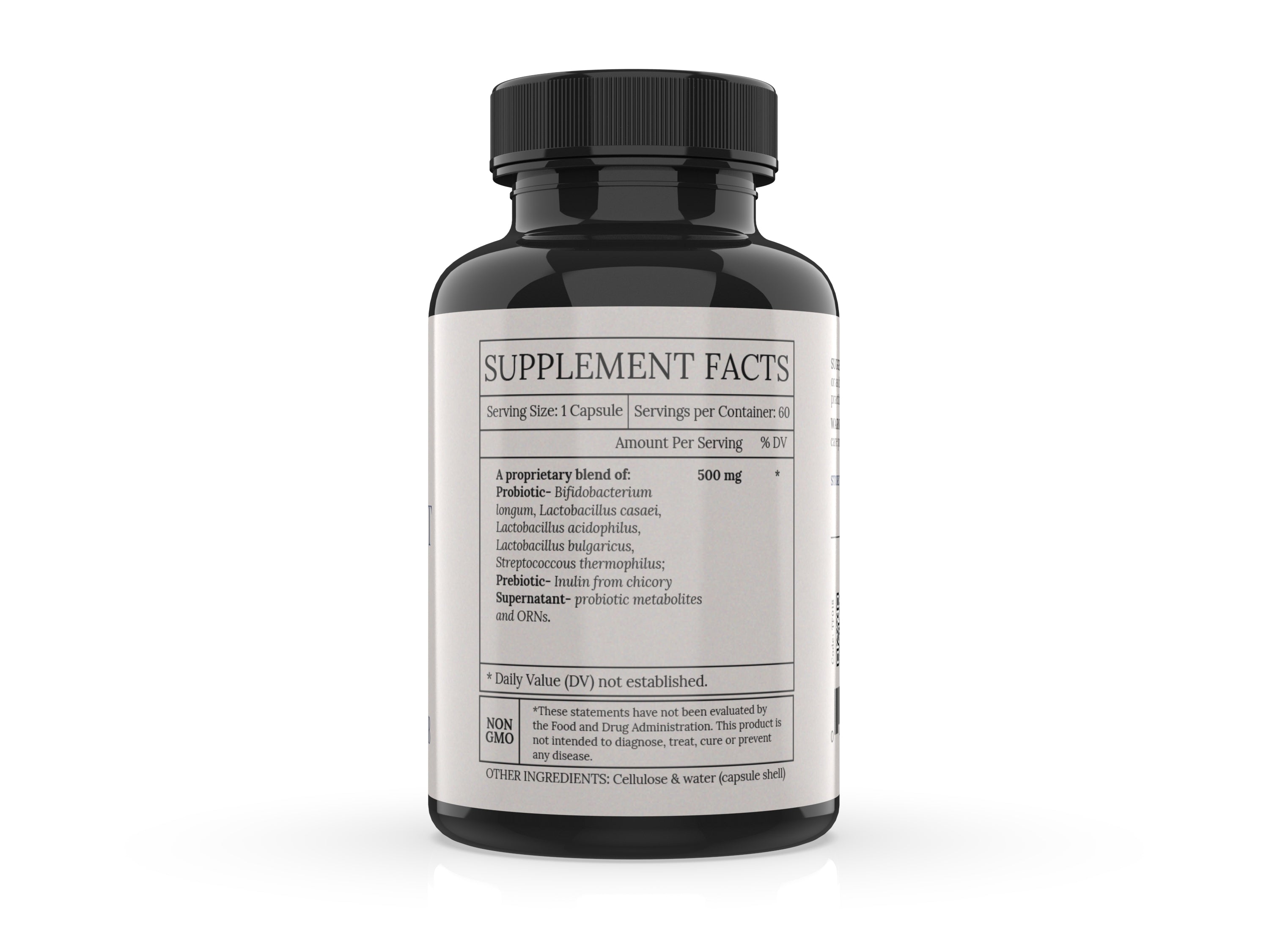The Supernatant Synbiotic Formula is an effective antimicrobial.*
BioImmersion’s advanced Super Blend of naturally occurring whole probiotic organisms with their Supernatant metabolites and microRNA (ORNs - Oligoribonucleotides) contains important nutrients and factors that help protect and balance the gut microbiota. 34 billion CFU per gram.*
Supernatant (or as some call it postbiotic or parabiotic) is the fermented “soup” that contains powerful probiotic metabolites: enzymes, such as bile hydrolase, lactase, and others, peptides, proteins, vitamins, short chain fatty acids, bacteriocins, biosurfactants, microRNA or ORNs, and other nutritional substances. Supernatant and microRNAs are the power behind the new emerging research on immune-biotics: the antimicrobial qualities exerted by probiotics and their metabolites (Arena et al., 2018).*
Learn the science of probiotics and their Supernatant in the Research tab.
The Supernatant Synbiotic is vegan, nonGMO, kosher, and gluten, soy, and dairy free.






